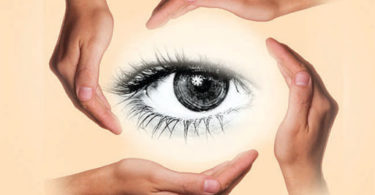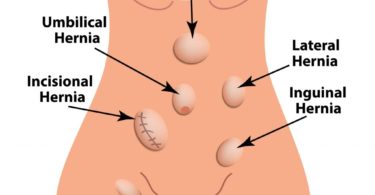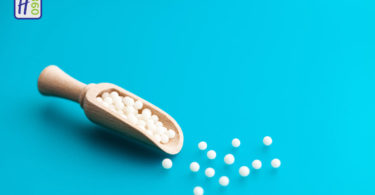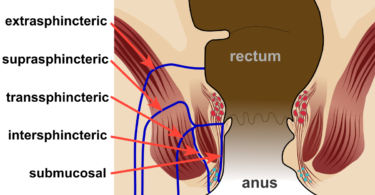Authors: Dr. Ashok yadav, HOD Dept. Of Practice of Medicine (Hom.) Dr. M.P.K. Homoeopathic Medical College, Hospital and Research Center. Homoeopathy University, Jaipur.
Dr. Virendra chauhan , Prof. Dept. Of Practice of Medicine (Hom.) Dr. M.P.K. Homoeopathic Medical College, Hospital and Research Center. Homoeopathy University, Jaipur.
Dr. Bhupendra Arya , MD Scholar, Department of Practice of Medicine , Dr. M.P.K Homoeopathic Medical College, a constituent college of Homoeopathy University, Jaipur.
Dr. Manish singh , MD Scholar, Department of Repertory (Hom.) , Dr. M.P.K Homoeopathic Medical College, a constituent college of Homoeopathy University, Jaipur.
Dr.Pushpendra maharshi , MD Scholar, Department of Repertory (Hom.) , Dr. M.P.K Homoeopathic Medical College, a constituent college of Homoeopathy University, Jaipur.
Abstract: Otitis media is an inflammatory condition of the middle ear that results from dysfunction of the eustachian tube in association with a number of illnesses, including URIs and chronic rhinosinusitis. 1 This article provide information about epistaxis along with homoeopathy medicine and important rubric from different repertories like Murphy Repertory2, Boericke Repertory3 Synthesis Repertory4.
Keywords: Otitis media , homoeopathy , repertories
Introduction : Otitis media is an inflammatory condition of the middle ear. The inflammatory
response in these conditions leads to the development of a sterile transudate within the middle ear and mastoid cavities. Infection may occur if bacteria or viruses from the nasopharynx contaminate this fluid, producing an acute (or sometimes chronic) illness. otitis media results when pathogens from the nasopharynx are introduced into the inflammatory fluid collected
in the middle ear. Pathogenic proliferation in this space leads to the development of the typical signs and symptoms of acute middle-ear infection. The diagnosis of acute otitis media requires the demonstration of fluid in the middle ear and the accompanying signs or symptoms of local or systemic illness
Etiology : The causative viruses (most commonly RSV, influenza virus, rhinovirus, and
enterovirus) can themselves cause subsequent acute otitis media; more often, they predispose the patient to bacterial otitis media.Studies using tympanocentesis have consistently found S. pneumonia to be the most important bacterial cause, isolated in up to 35% of
cases. H. influenzae (nontypable strains) and M. catarrhalis also are common bacterial causes of acute otitis media .
DIAGNOSTIC CRITERIA:
According to ICD-10 Criteria, person with the presenting complaints of5
- Fever.
- Otalgia.
- Irritability.
- Associated with decreased sleep and feeding habits.
The signs of inflammation in otitis media can be demonstrated by otoscope and the findings will be.
- Bulging of tympanic membrane
- Whitish or reddish or yellowish appearance of the tympanic membrane.
Some important rubrics from different repertories related to Otitis media:2,,3,4.
- Homoeopathic Medical Repertory by Robin Murphy
EARS, OTITIS media, infection, middle ear
Apis, arn, bar-c, BELL, bor, CALC, CALC-S, caps, caust, CHAM, dulc, ferr-p, gels, HEP, KALI-BI, kali-c, kali-i, kali-m, LYC, MERC, PULS, rhus-t, SIL, SULP, tell, thuj, tub, zinc.
- Homoeopathic repertory by William Boericke
EARS, Pain (Otalgia)
ACON, Apis, BELL, Borx,CAPS, CHAM, Coff, Dulc, FERR-P, Gels, HEP, Iod, Kali-bich, Kali-I, Mag-phos, MERC, Naja, PULS, Sang, Ter, Valer, VERB, Viol-o.
EARS, Tympanum (middle ear), Catarrhal, acute
ACON, BELL, Cham, FERR-P, Gels, Hep, KALI-MUR, MERC, PULS, Rhus-t, Sil.
- Synthesis treasure edition by Fredrick Schroyens
EAR, PAIN, acute
aloe, Ambr, anac, Arn, Bell, bry, calc, cann-s, caust, Cham, colch, colo, con, dulc, euph, hell, Hep, iod, kali-c, Kreos, lyc, merc, mez, mur-a, nat-c, nit-acid, nux-m, Nux-v, petr, phos, plat, Puls, Ran-b, Rhod, rhus-t, sabad, sep, sil, Spig, Sulph, teucr, thuj, valer, verb.
Homoeopathic management :
- Belladonna: Tearing pain in middle and external ear. Humming noises. Membrana tympani bulges and injected. Parotid gland swollen. Sensitive to loud tones. Hearing very acute. Otitis media. Pain causes delirium. Child cries out in sleep; throbbing and beating pain deep in ear, synchronous with heart beat. Hematoma auris. Acute and sub-acute conditions of Eustachian tube. Autophony-hearing one’s voice in ear.
- Chamomilla: Ringing in ears. Earache, with soreness; swelling and heat driving patient frantic. Stitching pain. Ears feel stopped.Dulcamara: Ear ache, buzzing and stitches. Ache with nausea; whole night, preventing sleep. Ailments from exposure to cold and damp weather.
- Ferrum-phos: Noises. Throbbing. First stage of otitis. Membrana tympani red and bulging. Acute otitis; when Bellad fails, prevents suppuration.
- Hepar Sulphur: Scurfs on and behind the ears. Discharge of fetid pus from the ears. Whizzing and throbbing in the ears, with hardness of hearing. Deafness after scarlet fever. Pustules in auditory canal and auricle.
- Pulsatilla: Sensation as if something were being forced outward. Hearing difficult, as if the ear were stuffed. Otorrhœa. Thick, bland discharge; offensive odor. External ear swollen and red. Catarrhal otitis. Otalgia, worse at night. Diminishes acuteness of hearing.
- Rhus tox: Pain in ears, with sensation as if something were in them. Lobules swollen. Discharge of bloody pus.
- Silicia : Fetid discharge. Caries of mastoid. Loud pistol-like report. Sensitive to noise. Roaring in ears.
- Verbascum Thapsus: Otalgia, with a sense of obstruction. Deafness. Dry, scaly condition of meatus (use locally).
Reference :
- Kasper, D. L., Fauci, A. S., Hauser, S. L., Longo, D. L. 1., Jameson, J. L., & Loscalzo, J. (2015). Harrison’s principles of internal medicine (19th edition.). New York: McGraw Hill Education. principles of internal medicine. 18th ed. New York: McGraw Hill, HealthProfessions Division; 2012.
- Murphy Robin. Lotus MateriaMedica, 2nd revised edition. New Delhi: B.JainPublishers(P) Ltd; 2006.
- Boericke William. New Manual Of Homoeopathic Materia Medica, New Delhi: B. Jain Publishers(P) Ltd; 2011
- Schroyens Frederik. Augmented Clinical Synthesis. 9.1 ed. New Delhi: B.Jain Publishers(P)Ltd; 2011
- Heather. L.Burrows, Alexander.R.Blackwood et al, Otitis Media, UHMS Otitis Media Guideline, 2013: 1-13.





